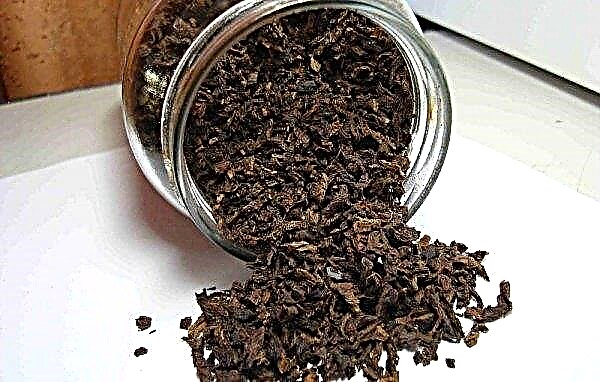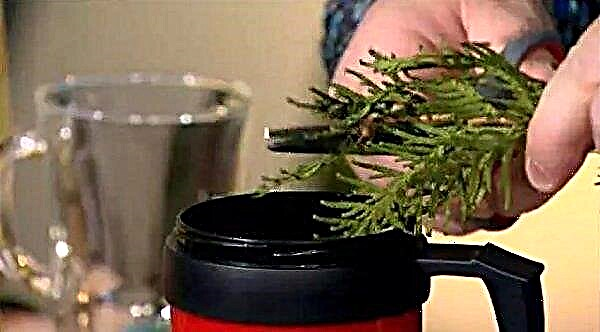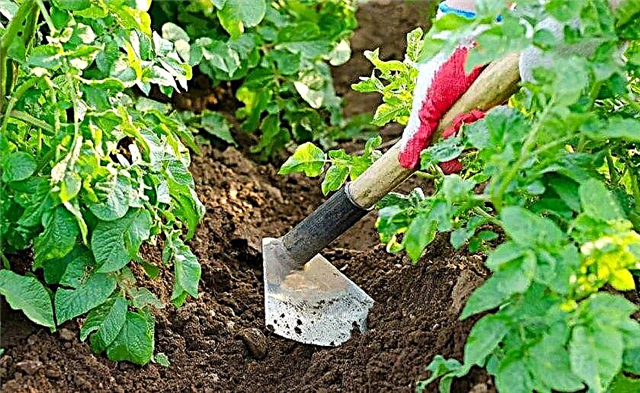Ficus is perhaps one of the most famous and favorite indoor plants. This flower grows very slowly, so usually they buy it already grown. However, to propagate ficus at home is a completely feasible task; we will tell you more about how to do it correctly.
Plant description
Ficus is a separate subfamily of plants belonging to the Mulberry family, whose homeland is the tropics. Most often they are found in the coastal regions of the Pacific and Indian oceans, South and West Africa, Australia, the Philippine and Hawaiian islands, but some species can grow in the temperate zone, in particular, in the Mediterranean, Crimea, Central Asia and the Caucasus.
Did you know? In nature, there is a huge variety of ficuses (from 800 to 1000), and among them there are huge trees reaching the height of a 7-storey building, as well as unusual species of vines completely devoid of roots that go into the soil and parasitize on other plants - the so-called epiphytes or chokes.
The following varieties of ficuses are usually used as indoor flowers:
Each of the mentioned plant species has many varieties and hybrids, and their number increases from year to year by the efforts of breeders.
Indoor ficuses can differ from each other in the size, shape and color of the leaves, but still the main distinguishing feature of the plant is its dense, wide and shiny leaf plates, as if covered with wax.
Did you know? “Fig leaf” is a consistent expression used to describe an unsuccessful attempt to cover up something unsightly. It was from the leaves of a fig, a variety of ficus, that Adam and Eve tried to sew their first clothes, realizing the shame of their nakedness after eating the fruit of knowledge.
Most often, they are located on the trunk one after another, but in some species they grow in pairs (opposite). The shape can be either solid or lobed (with wavy cuts, like oak), or serrated. Inside the stems and leaves is milky juice.
At home, ficuses bloom extremely rarely, and usually this process does not look very decorative. As a rule, the flowers of this plant are similar to small peas or berries of yellow, orange or green color.
However, even if the owner managed to ensure that the ficus bloomed, it would still be impossible to use this process to obtain seeds, since it is simply impossible to ensure full pollination of the plant at home. For this reason, indoor ficuses are propagated in the vast majority of cases vegetatively.
Optimal conditions and terms of propagation of ficus
There is no consensus regarding the choice of the term for the propagation of ficus. Some experts advise doing this at the very beginning of the activation of the vegetative phase of plant development (with an increase in daylight, that is, at the end of February or the beginning of March), others believe that it is better to wait until warm weather is established, therefore, they carry out the procedure from the end of spring and throughout summer (and when it comes to reproduction with the help of air layers, it is sometimes practiced even in the fall).
However, it is always necessary to take into account the danger that young plants will not have time to take root well before the onset of cold weather and the corresponding natural growth retardation. Therefore, when deciding on the moment for propagation, it is important to have an idea of the timing required for the flower to take root and sufficiently strengthen.
And this procedure is quite long. Depending on the chosen method of reproduction, the conditions created, the type of ficus and the initial strength of the cuttings or lay, the rooting process can take from 3 weeks to 2 months.
Preparatory work
Before starting work, you should prepare everything you need - a container, soil, tools and auxiliary materials.
Adult ficuses are best planted in ceramic flowerpots, wide enough and not very deep. However, in order to root the stalk, it is important to use small pots (not more than 10 cm in diameter, otherwise the young root system will be more difficult to consolidate, and excess free space will contribute to the development of fungal infections) with wide drainage holes to remove excess water.
It is best not to experiment with soil for beginning gardeners, but simply to buy a ready-made substrate for ficuses in a flower shop.
Important! If special soil for ficuses could not be found, you can use the soil mixture for palm trees, it has the same basic parameters.
The main requirements for soil:
- ease;
- friability (good air and water permeability);
- nutritional value;
- neutral or slightly acid reaction (pH in the range 5.5–6.5).
 More experienced growers can prepare the right soil on their own.
More experienced growers can prepare the right soil on their own.For young ficuses, you can use several options for the soil mixture, for example:
| 1 option | peat - 1 part humus leaf - 1 part sand - 1 part |
| Option 2 | soddy soil - 1 part sheet soil - 1 part peat - 1 part sand - 1 part |
| 3 option | sheet soil - 1 part small expanded clay - 1 part |
| 4 option | soddy soil - 1 part sheet soil - 1 part perlite - 2 parts |
If the preparation of the substrate was not using purchased land, but by self-collected soil, the resulting mixture must first be disinfected.
There are three ways to do this:
- Using low temperature (the substrate is taken out in the cold or placed in the freezer for 12 hours, after that it is placed at room temperature for the same time and frozen again: a double procedure allows you to kill all spores and larvae of pests that woke up after the first “warming”).
- With help high temperature (the earth is laid out on a baking sheet, which is placed for 5-6 hours in the oven, heated to + 70 ... + 80ºC.
- Using chemistry (The easiest option is to pour the substrate with a saturated solution of potassium permanganate, and then let the earth dry completely for at least one day).
In addition to the pot and soil, for the propagation of ficus, you will also need:
- sharp knife or scissors;
- alcohol to disinfect the instrument;
- rooting agents or phytohormones (preparations such as "Kornevin", "Heteroauxin", "Cycron", "Epin", "Fumara", etc.);
- drainage material (for example, expanded clay);
- film to create a greenhouse.
And, of course, the mother plant itself, which is planned to be propagated.

Reproduction of ficus at home step by step
Having decided on the choice of the moment and having prepared everything necessary, you can proceed to the procedure itself. As a source for obtaining a young plant, you can use cuttings, leaves or air layers. Consider the step-by-step breeding procedure for each of these methods.
Cuttings
Cutting branches of a branch from 10 to 14 cm long with one intact eye is best cut. The correct choice of a branch for cutting a cut is one of the main keys to success.
The following rules should be followed here:
- adult, woody branches are more suitable for grafting (the use of young shoots is a common mistake: they are poorly rooted and highly prone to decay);
- in order not to cause the mother plant too much stress, it is better to choose one branch and make several cuttings from it (there can be as many as there were leaves);
- in tree-shaped ficuses, the upper trunk fragment or stem, on which there is at least one bud, can be used as a stalk (although some experts advise leaving at least two eyes for reliability).
The very procedure for propagating ficus by cuttings is as follows:
- At the bottom of the prepared pots, pour drainage (up to 1/3 of the volume), and then the prepared soil mixture so that 0.5–1 cm remains to the edges of the tank.
- Wipe the knife or scissors with alcohol.
- Choose a suitable branch on the mother plant and cut it in one motion (if you want to plant only one stalk, you can cut only the top of the branch of the desired length, departing 1-1.5 cm from the second eye from above). The cut should be done at an angle of 45º.
- Wash the cut site on the adult ficus with a weak solution of potassium permanganate.
- Cut the cuttings of the required length from the prepared branch, not forgetting that the slices should always be oblique, and not straight.
- Remove leaves from cuttings.
- Make a shallow vertical incision on the underside of the handle (if the wood is very hard, two cross-shaped incisions are made). This is necessary so that the young plant is better rooted.
- Treat the stalk with a growth stimulator. Two options are possible here - sprinkle the lower part of the shoot into a powdery preparation and allow the product to soak or dilute the powder in water and soak the lower part of the handle in it.
- Put the handle in a container filled with warm, settled water (it should be opaque) and leave until the first roots appear - for about two weeks. If several cuttings are selected for rooting, the containers for each must be individual.
- When the roots grow to 1.5–2 cm, proceed with planting: make a small depression in the center of the substrate covered in a pot, place a stalk in the pit and carefully tamp the soil around.
- Pour the ground with slightly warmed, settled water, into which you can add a growth stimulator.
- Cover the pot with a shoot planted in it (this is necessary so that the soil remains warm and the air around the young plant moist) or with a glass jar.
Video: propagation of ficus by cuttings
Germination process is carried out in a slightly shaded place at high temperature - in order to strengthen, a young plant needs a climate within + 25 ... + 27ºС.
Some gardeners prefer to plant a stalk in the ground, without first putting it in water for rooting.
This method has both advantages and disadvantages compared to the standard procedure.:
- advantages:
- reduces the likelihood of failure (10–40% versus 30–50% when planting a stem that has taken root);
- reduces the total duration of the rooting procedure (on average 7-10 days).
- limitations:
- considered more difficult to perform;
- requires more intensive irrigation of the substrate, which increases the likelihood of decay of the cuttings due to waterlogging of the soil.
Leaf
The propagation of ficus by a leaf is understood not as rooting of the leaf as such, but the use of a shank with an unremoved leaf to obtain a new plant. This method is considered to be faster: if, without a leaf, the stalk takes root on average about 5 weeks, then with a leaf this process takes 3-4 weeks.
Important! The presence of the leaf on the handle provides the flow in the process of photosynthesis, which ensures the acceleration of the formation of roots and young shoots.
The process of preparing a pot of soil, disinfecting the instrument and choosing the right fragment for propagation is the same as with conventional cuttings.
In the future, you need to proceed according to the following scheme:
- Trim at an angle part of the branch with one leaf, leaving under it about half the distance to the next kidney.
- Treat the cut of the mother plant with alcohol or potassium permanganate.
- Leave the prepared segment in the open air until the milky juice on the cut line is completely dry.
- Dip the lower part of the shoot into the root-forming preparation.
- Using a sharp knife, make a few shallow scratches on the bottom of the shoot (located under the leaf). This technique will facilitate access of nutrients from the soil to the cuttings and accelerate rooting.
- Make a recess in the soil with which the pot is filled, and lower the stalk there to the base of the leaf plate.
- Tamp the ground around the handle.
- Stick a peg next to the shoot (you can use a pencil or a stick for sushi) and carefully attach the handle to it to give it stability.
- Carefully fold the sheet with a tube and tie it with a thread to fix it in this position. Reducing the area of the leaf plate is necessary not only to make it easier to cover the stalk with a film, but also to maintain the desired level of humidity inside the greenhouse (it is through the leaves that most of the moisture that the plant receives from the soil evaporates).
- Pour the soil with warm water.
- Cover the pot with a film or a jar and put it under the same conditions for rooting as with ordinary cuttings without a leaf.
Important! It is undesirable to choose cuttings with leaves that are too large, since in the absence of roots a young plant simply cannot “feed” such an organ and dump it, nullifying the whole point of the method. Therefore, for large-leafed ficuses, not a whole leaf plate is left on the handle, but only a part of it - 2/3 or ¾, depending on size.
Air layering
This method of propagation of ficus is the most reliable and fast (it takes no more than 3 weeks to root), but it can only be used for tree-like varieties of plants, while all kinds of ficus can be propagated by cuttings.
Layers can be of two types:
- airy (in this way large tree-shaped ficuses breed);
- horizontal (the method is suitable for plants with flexible branches, e.g. Ficus pumila, Ficus montana, or Ficus sagittata.
The process of propagating ficus by air layers is as follows:
- The parent plant needs to choose a healthy branch or a separate part of the trunk (the place for the future lay should be high enough above the ground, it is also desirable that the height of the plant above the lay is at least 60 cm).
- Using a sharp sterile knife, it is necessary to free a fragment 10–15 cm long from branches and leaves.
- In the center of the prepared area, immediately under the bud, mark a strip 1-3 cm wide (depending on the size of the plant), from which it is necessary to carefully remove the bark. To do this, two circular cuts are made around the circumference of the branch (trunk) and one cross between them, after which the bark is carefully bent along the vertical cut line and removed in a circle.
- Sprinkle a bare place with a powdery root.
- Wrap with moistened moss (it is best to use sphagnum) the place of the future lay so as to capture 3 cm from the top and bottom of a healthy branch.
- On top of the sphagnum, tighten the incision site with several layers of the film and intercept it with thread, wire or tape on top and bottom for fixing.
- In a few months, through the film, it will be possible to see the formation of young root processes. When this happens, you need to cut the branch directly under the lower retainer and, carefully removing the film, put in a pre-prepared individual pot.
Important! With the help of rooting of air layers, you can not only grow new plants, but also significantly update the mother (for example, if the ficus has dropped most of the leaves and completely lost its decorative effect). The layering allows you to very quickly get a fairly large young specimen, which, if cuttings were used, would require several years.
To root the horizontal lay, a healthy young branch is selected from the parent plant, excess leaves are cut from it, after which the shoot is pressed to the ground and slightly sprinkled with soil at the contact point, and then fixed with a hairpin or a load laid on both sides.Further, the plant is usually taken care of, and when its own branches begin to grow from the shoot pressed to the ground (a sign that the lay is rooted), it is carefully separated from the mother bush and transplanted into a separate pot.
Video: propagation of ficus by air layers
Subsequent Ficus Care
Care for young ficuses is necessary in the same way as for adult plants.
In this case, it is enough to follow a few additional recommendations:
- as long as the plant is under the film, it must be provided with periodic ventilation;
- you can shoot the film when young plants start to shoot new shoots, but you need to do this gradually - first for several hours, then increasing the time the flower is in the open air;
- at the stage of rooting for ficus, soil moisture is very dangerous, but even in a dry substrate young roots can easily die, therefore, the irrigation regime, selected taking into account the size of the pot, external temperature and other conditions, is one of the most important secrets for the survival of the seedling;
- another essential condition that must be observed is proper lighting: young ficuses cannot be exposed to direct sunlight, but the tropical plant also does not tolerate shading;
- Rooting takes place most quickly in warm soil, therefore, in addition to the desired heating from below (for example, by installing a pot on the windowsill, under which the heater is located), it is recommended to pour the substrate with slightly heated water.
Did you know? In eastern India, in the state of Meghalaya, there has long been an amazing technique for building bridges using Ficus elastica. Entrepreneurial residents simply threw bamboo poles through a water barrier and sent a lianike plant through them: after 10 years, this way you could get a bridge up to 30 meters long, capable of supporting 50 people at the same time!
What problems can arise?
When trying to root ficus, as well as when caring for young plants, flower growers may encounter certain problems.
The most common of them, as well as recommendations for their solution are given below:
| Problem | Reason and way to fix it |
| Rotting of the cuttings when rooted in water | The problem can be caused by weak shoots, low temperatures and other causes. In such a situation, you need to immediately clean the bottom of the stem from rot and, without waiting for the roots to be planted, put in a pot. |
| Decay of the root after planting in the ground | It occurs due to waterlogging of the soil or low temperature. First of all, you need to reduce watering. |
| Cuttings or layering after planting does not release new leaves | Most likely, the situation is stabilizing by itself. Ficus is very difficult to adapt to new conditions, so the appearance of new shoots sometimes has to wait several months or longer. During this period, it is important not to rearrange the flower to a new place, this will only exacerbate the problem. |
| Ficus discards leaves | The most common reaction of a plant to a change of environment and improper maintenance. In such a situation, it is important to analyze parameters such as lighting, humidity, watering (including water quality), air temperature, soil composition, the possible presence of drafts, etc. Also, reasons such as pest attack or fungal disease should be excluded. |
| Slow growth, thin branches, loss of decorativeness | Perhaps the plant lacks light. |
| Brown spots on the leaves | Arise due to sunburn, young ficus need to be protected from ultraviolet radiation. |
| Brown spots on the leaves | May indicate an excess of mineral fertilizers. |
| Leaf drying | The consequence of insufficient moisture - ficus should be sprayed with warm water as often as possible, as well as bathe periodically. |
| Leaves wither or curl. | Usually occurs if the plant is supercooled. You should increase the temperature in the room or move the flower to a more suitable place. |
Growing recommendations
Caring for ficus is generally uncomplicated. The main difficulties, as a rule, arise during the first 3 months after planting a plant or its acquisition (transfer to a new place). In addition, the flower reacts hard to the beginning and end of the heating season, since at this time the indoor microclimate usually changes quite sharply.
In order for the ficus to grow quickly and actively, and its leaves always look juicy, bright, shiny, not yellow, not dried and not fallen, should provide the plant the following conditions:
| Optimum air temperature | + 18 ... + 23 ° С |
| Minimum allowable air temperature | + 16 ° С |
| Air humidity | not lower than 70% |
| Lighting | bright, but without direct exposure to sunlight (the best place for the pot is the east window or the south side with artificial shading) |
| Watering | regular, as the topsoil dries up (in summer - at least twice a week, in winter - about once a week) |
| Top dressing | during the period of active growth (from February to October), organic fertilizing and complex mineral fertilizers for decorative and deciduous plants are alternately applied to the ground twice a month |
| Pruning | large plants need shaping pruning, which should be done every year in spring |
| Pests | mealybug, spider mite, scab, aphid, nematodes (if signs of damage are detected, the leaves should be washed with soapy water, and if the problem persists, use special preparations against insects or ticks) |
| Disease | root rot, gray rot, soot fungus, powdery mildew, anthracnose, cercosporosis (occur due to low temperatures or waterlogging of the soil, fungicidal preparations are used for treatment) |
Ficus is an unpretentious plant, however its reproduction requires certain efforts and skills. Nevertheless, it is not at all difficult to master this science, you just need to be patient and strictly adhere to all the recommendations without which rooting of cuttings or cuttings cannot occur.












